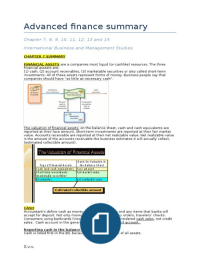Summary
Summary Advanced Finance ch. 7,8,9,10,11,12,13 and 14 (BEST SELLER)
- Course
- Institution
- Book
Advanced finance and accounting summary ch. 7,8,9,10,11,12,13 and 14, this summary is definitely worth its money, easily to understand the content and pass the exam
[Show more]




